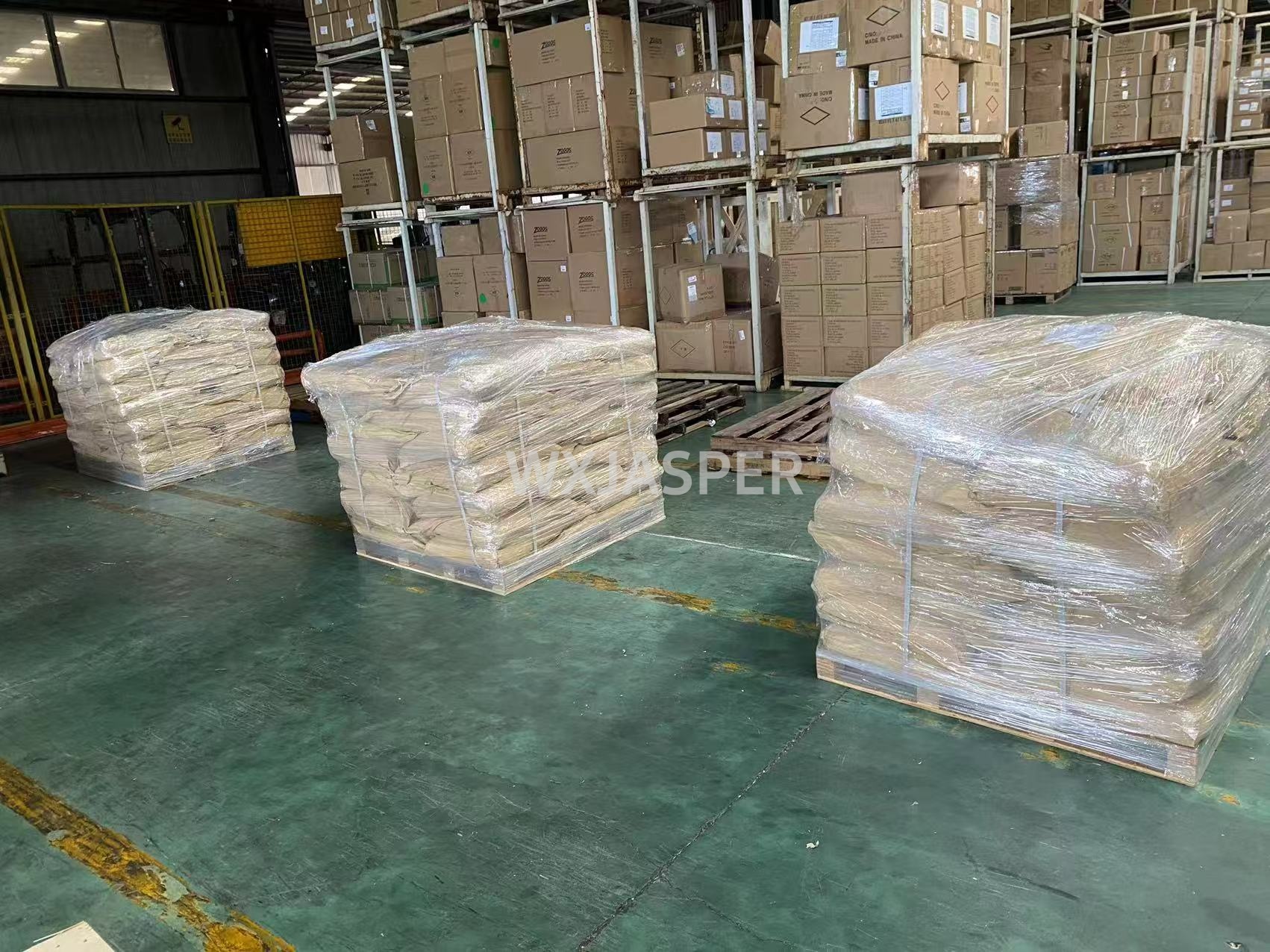Product Details
CasNo: 77-06-5
MF: C19H22O6
Appearance: powder
Delivery Time: 15 days
Packing: 25kg/bag
Purity: 90%
1. Basic Information
- Chinese Name: 赤霉酸
- English Name: Gibberellic Acid (abbreviated as GA₃)
- Chemical Name: (1S,2S,4aR,4bR,7S,9aS,10S,10aR)-2,7-Dihydroxy-1-methyl-8-methylene-13-oxo-1,2,4b,5,6,7,8,9,10,10a-decahydro-4a,1-(epoxymethylene)-7,9a-methano-benzo(a)azulene-10-carboxylic acid
- Molecular Formula: C₁₉H₂₂O₆
- Molecular Weight: 346.38
- CAS Number: 77-06-5
2. Physicochemical Properties
- Appearance: Pure product is a white crystalline powder.
- Melting Point: 227℃
- Density: 1.5±0.1 g/cm³
- Solubility: Easily soluble in organic solvents such as alcohols and acetone; slightly soluble in water; insoluble in petroleum ether, benzene, chloroform, and other non-polar solvents.
- Stability: Its aqueous solution is acidic and remains stable in acidic or weakly acidic solutions. It decomposes easily when exposed to alkalis, but can be stored for a long time in a dry state.
3. Mechanism of Action
Gibberellic acid primarily promotes plant growth and development by increasing cell number and stimulating cell elongation:
- It shortens the duration of the G1 and S phases of the cell cycle, accelerating cell division.
- It enhances the transcription level of genes related to xyloglucan endotransglycosylase (an enzyme that loosens cell walls), thereby facilitating cell elongation.
4. Efficacy
- Promotes Stem Elongation: Particularly effective for dwarf plants and rosette-forming plants. It can restore dwarf mutants of crops such as corn, peas, and rice to their normal wild-type growth status.
- Stimulates Seed Germination: Can replace light or low-temperature conditions to break the dormancy of light-dependent or cold-requiring seeds (e.g., seeds of lettuce, tobacco, and perilla).
- Induces Flowering: Promotes flowering in plants that require long days or low temperatures for blooming, even under non-inductive environmental conditions.
- Enhances Male Flower Differentiation: For monoecious plants (with separate male and female flowers on the same plant), treatment with gibberellic acid increases the proportion of male flowers.
- Boosts Fruit Set and Parthenocarpy: Improves fruit set in crops like apples; in grape production, it is used to induce seedless fruit formation and promote fruit enlargement.
5. Suitable Crops
Widely applicable to various crops, including rice, ginseng, celery, grapes, cotton, potatoes, green manure, flowers, citrus trees, pineapples, spinach, and sugarcane.
6. Formulations
Main formulations include:
- 90% Gibberellic Acid Technical Material
- 3% Gibberellic Acid Soluble Powder
- 3% Gibberellic Acid Emulsifiable Concentrate (EC)
- 4% Gibberellic Acid Soluble Concentrate
- 10% Gibberellic Acid A4+A7 Soluble Powder
- 15% Gibberellic Acid Soluble Tablets
- 20% Gibberellic Acid Soluble Powder
- 20% Gibberellic Acid Soluble Tablets
- 85% Gibberellic Acid Crystalline Powder
7. Application Methods & Dosages
- Promote Fruit Set or Seedless Fruit Formation:
- For cucumbers: Spray flowers once with a 50-100 mg/kg solution during the flowering period to improve fruit set and increase yield.
- For grapes: Spray fruit clusters once with a 200-500 mg/kg solution 7-10 days after flowering (especially for "Muscat" grape varieties) to induce seedless fruit.
- Enhance Vegetative Growth:
- For celery: Spray leaves once with a 50-100 mg/kg solution 2 weeks before harvest.
- For spinach: Spray leaves 1-2 times with the same concentration 3 weeks before harvest to increase leaf and stem size.
- Break Dormancy & Stimulate Germination:
- For potatoes: Soak tubers in a 0.5-1 mg/kg solution for 30 minutes before sowing.
- For barley: Soak seeds in a 1 mg/kg solution before sowing to promote germination.
- Improve Seed Setting Rate in Hybrid Rice Seed Production:
- Start treatment when 15% of the female parent panicles have headed, and end when 25% have headed. Spray with a 25-55 mg/kg solution 1-3 times, using lower concentrations first and higher concentrations later.


